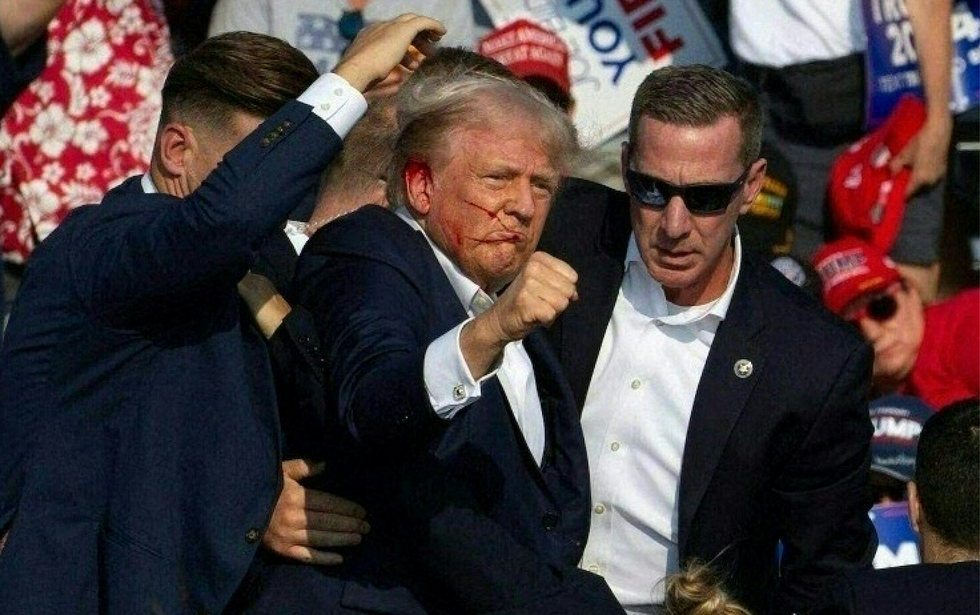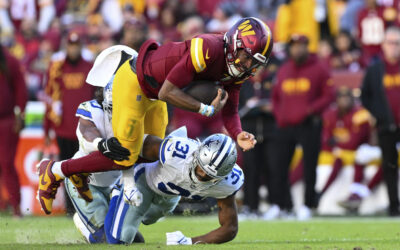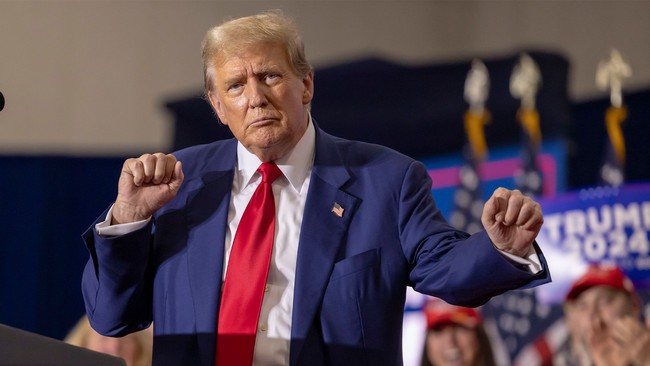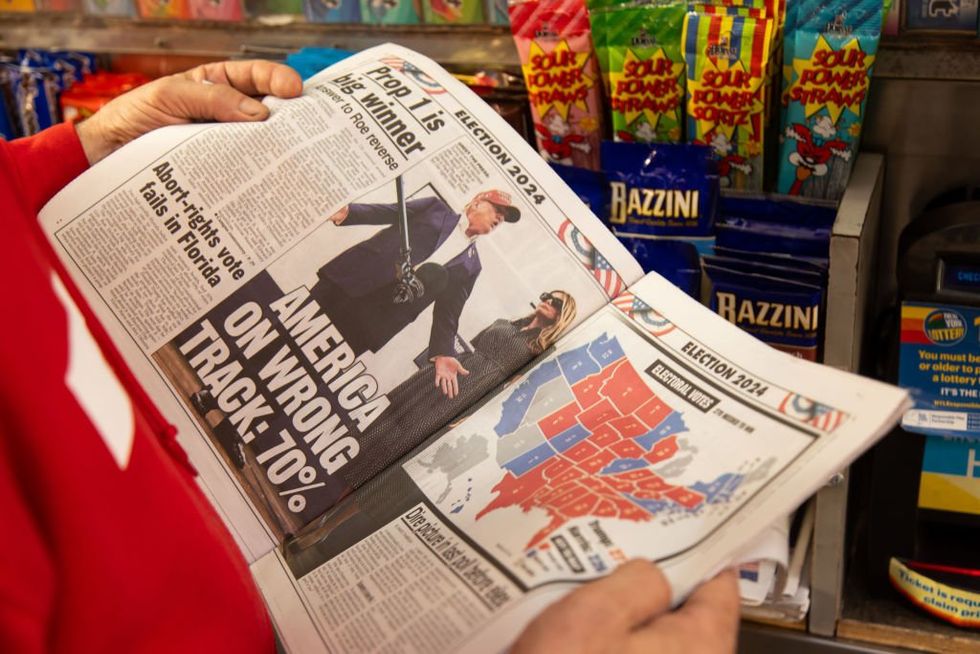Assassination attempt ‘will happen again’ if Secret Service doesn’t get new leadership, panel says

The U.S. Secret Service needs a new leadership team with significant experience from outside the agency in order to address a long list of critical failures laid bare by the nearly successful attempted assassination of former President Donald J. Trump in Butler, Pennsylvania, a review panel recommends.
A four-member investigation group appointed by Department of Homeland Security Secretary Alejandro Mayorkas restated many of the weaknesses identified by other investigators since the July 13 assassination attempt. The group said the Secret Service needs a new director and leadership team to address everything from risk-based threat assessment to the lack of critical thinking by personnel.
Among the most shocking aspects of the attempted assassination was how easy it was for a young man barely out of his teens to defeat what was supposed to be world-class security.
“The Secret Service as an agency requires fundamental reform to carry out its mission,” the panel wrote in a letter to Mayorkas. “Without that reform, the Independent Review Panel believes another Butler can and will happen again.”
The Independent Review Panel said the Secret Service “does not perform at the elite levels needed to discharge its critical mission.”
“The Secret Service has become bureaucratic, complacent, and static even though risks have multiplied and technology has evolved,” the panel wrote. “The work of the Independent Review Panel uncovered not only numerous mistakes that led to the events of July 13 in Butler, Pennsylvania, but also deeper, systemic issues that must be addressed with urgency.”
The 52-page document released Oct. 17 is the first final report from the nearly dozen probes under way in Congress, the FBI, the DHS Office of Inspector General, and other groups. Members include Janet Napolitano, DHS secretary under President Barack Obama; Mark Filip, a former federal judge and deputy attorney general under President George W. Bush; Frances Townsend, former Homeland Security adviser to President Bush; and David Mitchell, former superintendent of the Maryland State Police.
‘With striking ease’
The panel conducted 58 multi-hour interviews, surveyed the Butler Farm Show Inc. site, and amassed some 7,000 documents.
Among the most shocking aspects of the attempted assassination was how easy it was for a young man barely out of his teens to defeat what was supposed to be world-class security.
“The July 13 assassination attempt was not the work of a trained foreign adversary prepared to conduct a multi-dimensional attack and willing to sacrifice themselves in the process,” the report said.
“Rather, a young, local Pennsylvania man who had seemingly conceived of and executed his assassination plot within days after the former president’s rally was publicly announced had managed, with striking ease, to circumvent the Secret Service’s ‘no fail’ protective mission.”
Would-be assassin Thomas Matthew Crooks climbed onto the American Glass Research roof just after 6 p.m. July 13 and ran the length of the complex until he reached Building 6, where he made his sniper’s nest.
A SWAT operator looks to access the roof of the American Glass Research building after the July 13 shooting of former President Donald J. Trump in Butler, Pa.
Butler Township Police Department via Judicial Watch
A Pennsylvania State Police trooper saw Crooks running on the roof and broadcast a warning on police radio, but Secret Service officials said they never heard it. Acting Director Ronald Rowe Jr. said the first indication of a threat came when Crooks unleashed the first of eight shots from an AR-15 rifle.
A SWAT team operator — Sgt. Aaron M. Zaliponi of the Adams Township Police Department — stopped Crooks’ attack when he shot and damaged the buttstock on his rifle. A short time later, a Secret Service counter-sniper killed Crooks before he could attempt any more gunplay.
Trump was struck in the ear by the first shot. Other rounds killed volunteer firefighter Corey Comperatore and seriously wounded David Dutch and James Copenhaver. Overall 10 people were injured during the tragedy, including seven law enforcement personnel and one Secret Service agent, the report said.
Major blunders by the Secret Service included failing to secure the rooftops in the AGR complex 130 yards north of the event stage and not taking steps to prevent the gunman’s direct line of sight to the former president, the report said.
Lack of effective communication between the Secret Service and state and local law enforcement agencies helped Crooks escape early detection and prevented Trump’s protective detail from removing him from the stage or even preventing him from appearing at the podium, the report concluded.
The Butler County Emergency Services Unit set aside pre-programmed radios for use by various Secret Service personnel — including counter-sniper teams — but the radios sat untouched.
The panel recommended that the Secret Service work in the same command center as local law enforcement instead of the separate accommodations used in Butler “with the integration of a real-time incident command management system.”
The failure to have counter-drones in the air during a “critical period of time when it could have detected Crooks operating a drone” indicates a “deeper concern” by the panel “regarding a general lack of technology to support the Secret Service’s protective mission.”
Secret Service agents cover former President Donald J. Trump after he was shot in the ear by a would-be assassin in Butler, Pa., July 13.
Photo by Jabin Botsford/The Washington Post via Getty Images
The Secret Service did not have drone coverage through most of the day. Crooks surveilled parts of the site with his own drone, starting at about 3:50 p.m. and running for about 11 minutes, the FBI has said. Security experts told Blaze News that Crooks was likely checking his planned route to ensure that conditions had not changed since he first surveilled the site.
An inexperienced Secret Service staff member could not get the counter-drone system working and ended up repeatedly calling technical support for the drone manufacturer, according to the House Task Force to Investigate the Attempted Assassination of Donald J. Trump.
The Independent Review Panel recommended “a mandate that all outdoor events are observed by overhead technology.”
Changes to site security planning should include better identification of line-of-sight threats and “significant training” on how to use a risk-based threat identification system rather than basing resource decisions on a protectee’s title, the report said.
The panel said a clean sweep needs to be made of top leadership of the Secret Service, with a new director coming from outside the agency. This will help address systemic or cultural issues that show in a lack of critical thinking, a lack of ownership for site planning and other issues, and the need for extensive training.
The group also recommended some internal reorganization to place an emphasis on the Secret Service’s protective mission as opposed to investigative or other functions.
The panel said that while additions to the Secret Service’s $3.1 billion budget “would be helpful,” the focus should first involve “dialogue around the failures of July 13” or the “critical lessons from July 13 will have been lost.”
Like Blaze News? Bypass the censors, sign up for our newsletters, and get stories like this direct to your inbox. Sign up here!









